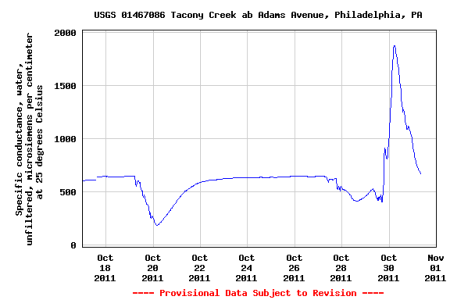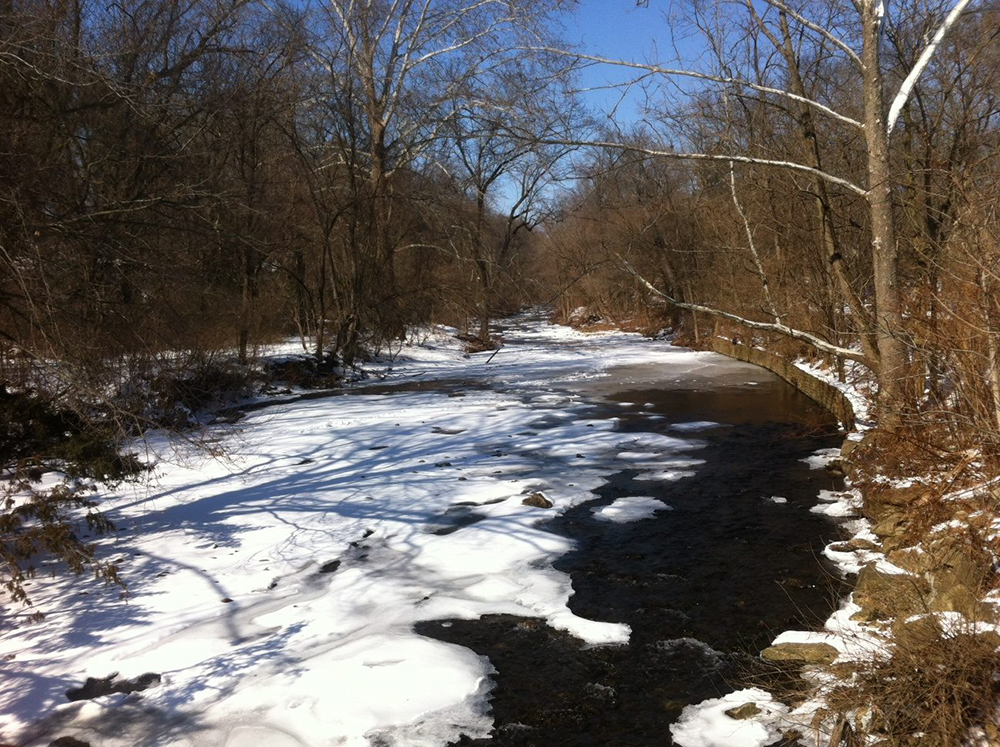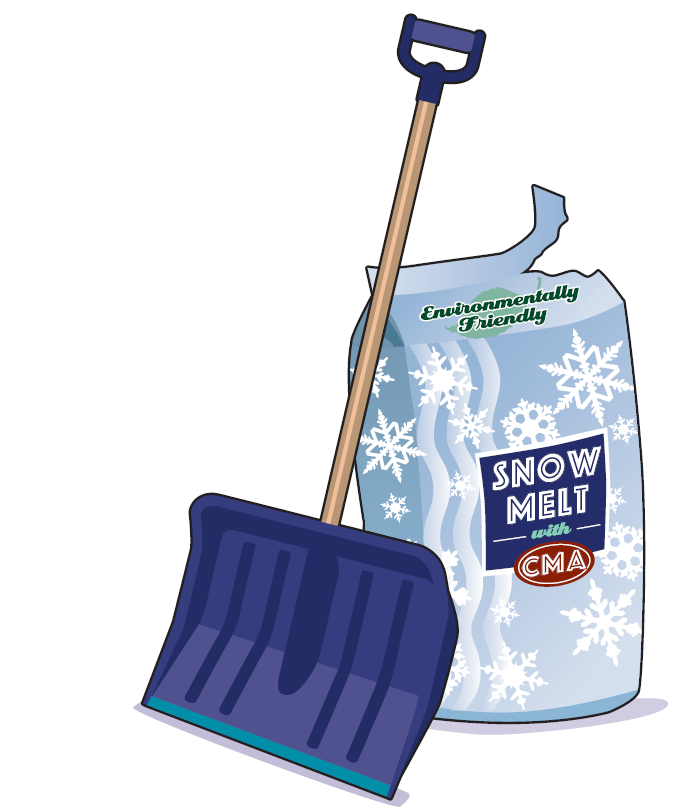
Image: U.S. Geological Survey
We’d like to stress that the graph above does not show the marked increase in consumption of Halloween candy in area households. It does, however, tell a tale of two storms and how they influenced specific conductance (rough translation: amount of dissolved salt) in Tacony Creek last month. Normally, Philadelphia’s streams contain more dissolved salts than rainwater, so the graph above should dip during rainstorms as the rainwater dilutes the stream. The two storms—one on Oct. 20 and one on Oct. 30—were comparable in size, and the graph plummets accordingly on Oct. 20.
So what caused the salt levels to spike on Oct. 30? The previous day’s unusually early-season snow and ice storm is the indirect culprit. De-icing salt applied to roads likely washed into Tacony Creek, causing levels of dissolved salt to rise significantly. Too much salt (sodium chloride) in creeks and streams can negatively impact fish and other aquatic life.
As winter approaches, remember that all de-icing materials can cause harm to the environment, and it’s best to use them as little as necessary. For tips on applying de-icers and to learn about salt alternatives, see our Winter Ice Removal guide.


